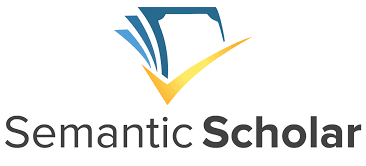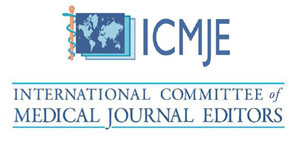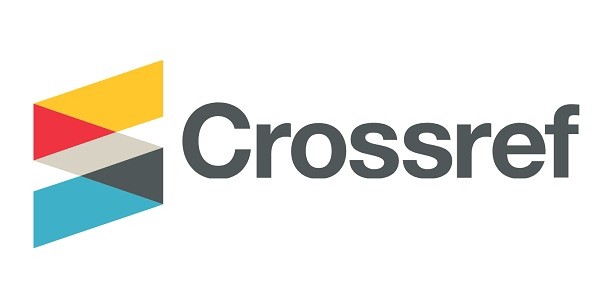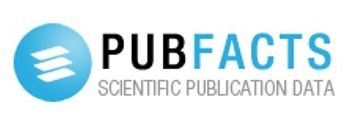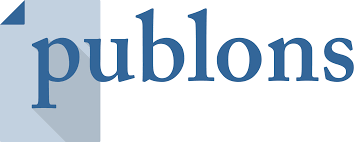Author Guidelines
Categories of manuscripts
21st Century Publisher publishes original research, review articles, short communications, clinical case studies, letters to editor, perspectives, opinions, commentaries, book reviews and images articles. We provide opportunity for authors to submit their evidence-based findings and theoretical insights of high quality to our journals. Authors can refer detailed description of various article types in the table below:
|
Research Article |
Research articles are written using a clearly defined research methodology based on empirical or secondary data collected, where conclusions are drawn from the study of the data collected. The details must be focused on original study, which adds to the body of knowledge in the field of Publisher. Article(s) should include a vital summary or analysis of the data provided, while at the same time incorporating new and rapidly expanding fields. Must include an abstract of at least 300 words with a minimum of 4 to 8 keywords. The abstract should be divided into Objective, Methods, Results, and Conclusion. Research articles must adhere to an introductory format accompanied by a brief examination of relevant literature, methods used (to collect data), discussion and references, charts, and legends of figures. |
|
Review |
Review articles are written mainly based on secondary data that falls in line with the publisher's theme. They are brief, yet critical discussions on a particular aspect of the topic in question. Reviews typically start with a brief abstract of 300 words and a few keywords to state the problem. Introduction usually takes the problem forward to the readers with the aid of necessary tables, graphs, photos and diagrams, accompanied by analytical discussion where necessary. This summarizes the subject with a conclusion. All claims or conclusions in the review articles shall be based on the required citations providing complete reference at the end of the article. |
|
Short Communication |
Short Communications are short papers that present original and significant material for rapid dissemination. For example, a Short Communication may focus on a particular aspect of a problem or a new finding that is expected to have a significant impact. Short articles include, but are not limited to: discovery or development of new materials, cutting-edge experiments and theory, novelty in simulation and modelling, elucidation of mechanisms. As Short Communications are expected to have higher than average impact on the field rather than report on incremental research, they will receive prioritized and rapid publication. |
|
Commentaries |
Commentaries are opinion articles written mainly on a particular development, recent innovation or research findings by seasoned and experienced writers that fall in line with the publisher's theme. With the title and abstract, they are very brief papers that offer the essence of the subject to be discussed, with few main words. It immediately states the issues and, if necessary, offers a detailed review with the aid of diagrams, graphs and tables. With a brief conclusion, it summarizes the subject, citing the references at the end. |
|
Case report/case study |
A case report is a detailed report of the symptoms, signs, diagnosis, treatment, and follow-up of an individual patient. Case reports usually describe an unusual or novel occurrence and as such, remain one of the cornerstones of medical progress and provide many new ideas in medicine. Cases reports must be brief and follow a clear format such as Cases and Methods Section (That describe the nature of the clinical issue and the methodology adopt to address it), discussion section that analyzes the case and a Conclusion section that sums up the entire case. Doctors are encouraged to contribute interesting case reports. |
|
Concise Communications/ Letters to the Editor |
The editor's letters should be limited to comments on previous articles written with special regard to problems and causes related to them. It should be concise, detailed and brief case studies or study findings. A structure such as abstract, subheads, or acknowledgments are not necessary. It is more a reaction or the reader's opinion regarding a specific article published and should meet the editor within 6 months of the publication of the article. |
|
Clinical images |
Clinical images are visual representations of Publisher Research and should not surpass a definition of more than 5 figures with not more than 300 words. No references and citations are usually needed here. Only three references would be allowed if needed. Do not apply separate figure legends to clinical images; the figure legend is the entire clinical image text. |
|
Editorial |
Members of the Editorial board are invited to comment on an important subject in their field, on its current research status and on future directions to encourage the advancement of this discipline. Editorial office may approach for any such works and authors must submit it within three weeks from the date of receiving invitation. |
|
Frontier |
Highly influential scientists are invited to write a Frontier article select a highly cited, cutting-edge original paper of his/her own and summarize the major findings, the problems that have been resolved and remain to be resolved, and the future research directions, in order to help readers, understand his/her important academic point of view and perspectives on the directions of research in their field. |
|
Perspective or Opinion |
Perspective or Opinion are scholarly articles expressing or highlighting authors view point on an existing topic or these can be unique ideas/insights on advancing research. These are group of high impact articles which opens new arenas of open discussion forums in scientific research. |
|
Methodology |
Demonstrate a novel experimental technique, test, or procedure. The methods mentioned could be wholly new or an improved version of one that already exists. All conceivable tests and outcomes should be demonstrated in the technique. |
|
Rapid communications |
Short papers presenting highly significant and original material. |
Article Formatting and Preparation Guidelines
The publisher follows a finely tuned and well-crafted format for article publication. Authors are instructed to follow publisher suggested format which will be re-evaluated and arranged in our post-acceptance process. Authors are suggested to use the check list below before submitting the manuscript.
- Cover letter
- Title
- List of authors along with affiliations, email id and contact number
- Abstract no longer than 300 words
- Keywords
- Introduction
- Main body (Suggested IMRaD format) preferably in doc, docx, format.
- Abbreviations
- References
- Acknowledgement
- Author Contributions Statement
- Conflict of statement
- Figure and Table Legends
- Display Items [Figures (according to the digital images integrity and standards in eps, tiff, jpg formats) and Tables (in Word)]
- Supplementary Information
- The cover letter should not exceed more than a page that incorporates:
- It should encapsulate the importance of your paper to the scientific literature.
- Suggest relevant (J21CP) Academic Editors to handle your manuscript.
- Your cover letter should not include requests to reduce or relinquish publication fees.
- Follow (J21CP) Editorial Policy for more information regarding the publication fee.
Title page
Title
The article submitted should be with both the full title and short title. The full title should on the top of the manuscript file and the short title is required during the online submission process.
Abstract
The abstract should summaries the study's principal goal in less than 300 words and briefly describe the most relevant findings and their importance?
Keywords
Manuscript should contain 3-10 important words or phrases. Keywords must be placed after the abstract. E.g., Publisher; Clinical Publisher; Anatomic Publisher
Introduction
The data in the manuscript should help readers outside the discipline to grasp the research's objective and importance. Infer with a brief summary of the work's overarching goal and a comment on whether or not that goal was met.
Materials and methods
Material and methods should be thoroughly explained. Authors may cite works that discuss protocols if materials, methods, and protocols are well established.
Results
The results can be created by separating or combining this category. There is no word restriction, but the language must be exact. It should explain the research's findings and conclusions.
Discussion
The main findings of the study must be stated. The research in question and hypotheses must be addressed with specific evidence from the experimental results. Clear competing explanations must be provided for results with multiple interpretations.
Conclusion
In this section, significance of the current study can be stated. The main outcomes of the study should be summarized and limitations of the study can be stated along with future perspectives.
Conflicts of Interest
The article requires authors to declare any competing financial and/or non-financial interests in relation to the work described in the interests of transparency and to assist readers in forming their judgments of potential bias. The corresponding author is responsible for submitting a statement of competing interests on behalf of all paper authors.
Competing interests are defined for the purposes of this policy as financial and non-financial interests that could directly undermine, or be perceived to undermine, the objectivity, integrity, and value of a publication through a potential influence on the judgments and actions of authors with regard to objective data presentation, analysis, and interpretation.
Funding Statement
In this section authors should mention the name of the funding agency that supported their research along with grant numbers.
Acknowledgments
People who contributed to the work should be acknowledged, along with their contributions. You must ensure that anyone named in the acknowledgments agrees to be named in the acknowledgments.
References
Only manuscripts that have been published or accepted should be included in the reference list. Manuscripts that have been submitted but have not yet been accepted for publication should not be cited. References must be listed at the end of the manuscript in the order in which they appear in the text. Citations in the text should be indicated by the reference number in brackets. References in the main text should be represented with numbers in square brackets e.g., [1]. Reference should be formatted as per Vancouver style.
Tables
Tables should be at the end of the manuscript. A title should appear above or below each table. Tables that take up more than a page should be avoided if at all possible.
Figures
Figures should have a brief title of no more than 20 words that describes the image. Images should be in high-resolution jpg or tiff format.
Supplementary Materials
Supplementary materials such as video clips, audio files or datasets can be submitted along with the manuscripts either in a single file or as a .ZIP file (if multiple files are there).
Proofs
Corresponding author will receive the galley proofs along with instructions after the acceptance of the article. Authors must send the corrected proofs within two to three days of receipt. Only necessary changes will be made in the article at this stage.
Agreements on Copyright & License
The 21st Century Publisher publishes open access model papers and we follow the model of the Budapest Open Access Initiative (BOAI).
Open access, has so far been limited to small portions of the journal literature. Even in these small collections, however, the 21st Century Publisher demonstrates that open access is economically feasible, giving readers unprecedented power to end.
Financial competing interests
Funding: Research support from organizations that through this publication can benefit or lose financially. The conceptualization, design, data collection, review, decision to print, or preparation of the manuscript should be revealed as a special function for the funder.
Employment: Recent or anticipated employment by any organization that may gain or lose financially through this publication.
Personal financial interests: Stocks or shares of companies capable of gaining or losing financially through publishing; fees for consulting or other remuneration of organizations capable of gaining or losing financially; applications for patents or patents filed by authors or their organizations, the value of which may be influenced by publication.
Non-financial competing interests: Competing non-financial interests can take various forms, including personal or professional relationships with organizations and individuals. We will urge writers and referees to declare any unpaid jobs or relationships that might have an impact on the process of publication.
Publication Overlapping
Authors should not send the same manuscript concurrently to more than one journal, in the same or different languages. The rationale for this standard is the potential for disagreement when two journals claim the right to publish a manuscript submitted simultaneously to more than one journal and the possibility that the work of peer review, editing the same manuscript, and publishing the same article will be unknowingly and unnecessarily carried out by two or more journals. Duplicate publication is the publication of a paper which, without a direct, obvious relation to the previous publication, coincides substantially with one which has already been published. The disclosure of information in the public domain can require prior release.
Confidentiality & Anonymity
Confidentiality: Maintaining the confidentiality of information obtained from research participants ensures that the responses of individual subjects can only be identified by the investigator or individuals of the research team; however, researchers must make every effort to prevent individual subjects from communicating with their responses to someone outside the project.
Anonymity: Providing anonymity of information obtained from study participants means that either the project does not collect individual subjects' identifying information (e.g., name, address, email address, etc.), or the project is unable to associate individual responses with the identities of participants.
Corrections: Honest errors are part of research and publishing and, when they are found, require the publication of a correction. Authors should inform the Production Editor of any factual errors they have found (or were told of) in their article after they have been written. Corrections are performed at the discretion of the journal. The correction method is based on the stage of the article's publication, but a correction notice is issued as soon as possible in all circumstances.
Retractions: Retractions are considered by journal editors in cases of evidence of unreliable data or findings, plagiarism, duplicate publication, and unethical research. It may be considered an expression of concern notice if an article is under investigation. The retraction procedure depends on the publication stage of the article.
Obligation to Register Clinical Trials
The aim of the registration of clinical trials is to prevent selective publishing and selective reporting of study results, to avoid excessive duplication of research effort, to help patients and the public know what trials are planned or going to be enrolled in, and to help provide a view of similar work and data relating to ethics review boards considering approval of new studies. Retrospective registration, such as at the time of submission of the manuscript, does not serve any of these functions. These objectives often extend to research with alternative designs, such as observational studies.
Secondary data analysis of primary (parent) clinical trials should not be reported as independent clinical trials, but the primary trial registration number should be referenced instead.
The following three similar meanings of a "clinical trial" are given. If any one of these definitions is met by your research, the trial should be registered. For 'applicable clinical trials' specified as follows, the FDA (Food and Drug Administration) requires registration:
For any drugs and biologics trials: regulated clinical investigations of a substance subject to FDA regulation, other than Phase I investigations.
For biomedical product trials: randomized trials of products subject to FDA regulation with health outcomes, other than limited feasibility tests, and post-market surveillance.
Clinical Trials Registering
The definition of a clinical trial by the ICMJE (International Committee of Medical Journal Editors) includes: Any research study that prospectively assigns one or more health-related treatments to human subjects or groups of humans to determine the impact on health outcomes.
The NIH describes a clinical trial as "a prospective study of human subjects in biomedical or behavioral research to answer specific questions about biomedical or behavioral interventions" (drugs, treatments, devices, or new ways of using known drugs, treatments, or devices).
Reviewer Suggestions
Peer review process is the main mechanism which drives the Journal to maintain the quality publication. Peer review is to assess the manuscript quality and worth to publish. In this, experienced reviewers are the valuable sources to conduct the review. Every manuscript solicits at least two reviewer comments for the evaluation before its publication. Most of the time potential reviewers are suggested by the handling editors. Scientific Journals concentrate on quality peer review process.
Additional Language Editing
As we are English-only publisher, we expect the authors submitting a grammatically sounding manuscript for consideration. For non-native English speakers, we suggest that the manuscript professionally edited & proof read before the initial submission by a native English-speaking colleague, or a reputed English editing services provider.
However, upon acceptance, all articles undergo publishing standard in-house language editing to particular level. Additional charges may applicable if the accepted article needs extensive language editing. In such cases the corresponding author will be informed the same.
Preprints and Conference Papers
21st Century Publishers recognizes preprints as a draft version of a paper made available online before submission to a journal. Authors can submit their preprints for evaluation and possible publication with the 21st Century Publisher journals. Please be noted that preprint publication does not assure the journal publication. The peer-review process may change the contents of the article in the final version of publication.
Unpublished conference presentations can be submitted for the consideration of publication. However, they should meet the criteria of a research article. Besides, the author should cite the conference paper in the first place, and author has to obtain appropriate permissions from the respective copyright holder.
Manuscript Transfer
In certain circumstances, if the editors believe that the submitted/under review/rejected article is more suitable for some other journal (other than the submitted one), the authors may be offered to transfer the journal respectively. This transfer simplifies and shortens the process of submitting article to a suitable journal. However, the authors may accept or decline the transfer offer.
Please be noted that transferring a manuscript does not guarantee the publication of the article as each journal is editorially independent.
Post-Acceptance & Post-Publication Policies
Upon acceptance of an article, the corresponding author will receive e-mail notification and galley proofs subsequently. Galley proofs should be returned to the editorial office with the marked corrections if any within 48 hours; this will ensure timely publication of the manuscript.
It is Corresponding Author’s responsibility to ensure that all authors listed on the manuscript agree with the changes made on the proofs. As 21st Century Publishers adapted continuous publication process; the Galley proof will be sent for final production immediately upon approval by corresponding author.
Any further additions and corrections in the published article are subjected to editor approval. Authors should note that any additions and corrections by the author(s) in published article may be chargeable as it will be published as a correction (new article). However, if the article needs minor corrections and additions (which will not affect the contents of the article), will be corrected in the original published version.
A published article may be retracted/removed/withdrawn if there are any scientific flaws, data fabrication or ethical reasons. The retraction requests may be raised from the author(s), or readers, or editors. The Editor-in-Chief/Editor of the journal will take a final call on article’s fate. If the article is retracted, a notice of Retraction will be published along with the article with the information about the reason for the Retraction. The original text of the article will remain online, except for legal reasons and extraordinary circumstances where the article will be completely taken down from the web.
Expressions of Concern
The journal will issue expression of concern for a published article if the editorial office/editor noticed or learned that if:
There is inconclusive evidence of research on the article
Misconduct of the authors involved in publication
There is a peer-review fabrication or publication involving conflict of interest
The conclusions were drawn with fabricated or inconclusive data or evidence
The editorial office will investigate the issue thoroughly and replace the expression of concern with a correction or a retraction.
Article Retraction Policy
Retractions are considered by journal editors in cases of evidence of unreliable data or findings, plagiarism, duplicate publication, and unethical research. It may be considered an expression of concern notice if an article is under investigation. The retraction procedure depends on the publication stage of the article.
Article Withdrawal Policy
Editor can withdraw the articles if any scientific misconduct (duplicate submissions, article published in another journal, bogus claims of authorship, data fabrication, article plagiarism) is noticed. Editor has the right to withdraw an article at any stage of the publication process if the authors do not reply to communication from the editorial office, even after multiple reminders. In such cases the editor will send an email to the authors stating that article has been withdrawn and editors cannot be held responsible for the consequences arising from it. In place of the withdrawn article (only for Articles in Press), the editor will add a PDF stating that article has been withdrawn as per the 21st Century Publisher policy.
Manuscript Withdrawal Charges
Authors may withdraw their papers at any time during the publication process by paying the withdrawal penalty. Editor will collect the penalty charges to cover the costs incurred during the publication process (including cost for plagiarism tool, peer-review system, editing, publishing, maintaining & archiving, and allows immediate access to the full text versions of the articles). As mentioned in the article retraction policy, authors must submit a letter (duly signed by all the authors) stating the reason for withdrawal/retraction along with Manuscript Withdrawal Charges. Authors are not allowed to withdraw the papers without paying the Withdrawal Penalty. 21st Century Publisher, holds ALL RIGHTS to publish the manuscript without further approval from the author, and can’t be held responsible for publishing of manuscript in any other Journal.
Article Refund Policy
In case of article withdrawal/retraction/removal, Article processing charges (if paid) will not be refunded to authors as publisher incur lot of cost during publication process which includes cost for peer-reviewing, editing, publishing, maintaining & archiving, and allows immediate access to the full text versions of the articles. Refunds will be made only in rare cases where there is a double payment made by the authors.
Our Articles will be Indexed in


